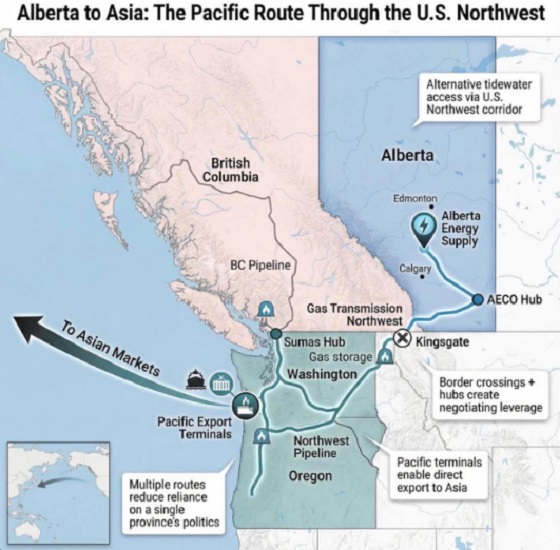Also Interesting
How AI is changing retail business in Canada

Artificial Intelligence (AI) is reshaping the landscape of the retail industry around the world, and Canada is no exception. AI is revolutionizing the way retailers operate, from enhancing the customer experience to optimizing supply chains. In this article, we will explore how AI is changing the face of retail business in Canada and the key areas where it’s making a significant impact.
1. Customer-Centric Retail: Personalized Shopping Experiences
One of the most noticeable ways AI is changing retail in Canada is by personalizing the shopping experience. AI algorithms analyze vast amounts of customer data to understand preferences, shopping behavior, and demographics. This allows retailers to tailor product recommendations, offers, and marketing messages to individual customers. Personalization not only enhances the customer experience but also boosts sales and customer loyalty.
2. Inventory Management: Reducing Wastage and Stockouts
AI-driven inventory management systems are optimizing supply chains and helping retailers avoid overstocking or understocking products. By analyzing historical sales data, current trends, and external factors like weather, AI systems can predict demand more accurately. This leads to reduced wastage and prevents stockouts, ensuring that customers can find what they need when they visit a store or shop online.
3. Enhanced Customer Support: Chatbots and Virtual Assistants
AI-powered chatbots and virtual assistants are becoming a staple in the retail industry. They provide 24/7 customer support, answer common queries, and assist with orders. These intelligent virtual assistants can handle a wide range of customer interactions, allowing human support agents to focus on more complex issues. This results in improved customer service and operational efficiency.
4. Pricing Strategies: Dynamic and Competitive
AI algorithms are transforming pricing strategies. Retailers in Canada are using dynamic pricing, adjusting prices in real-time based on factors such as demand, competition, and inventory levels. This dynamic approach keeps pricing competitive and maximizes profits.
5. Supply Chain Optimization: Predictive and Efficient
Efficient supply chain management is crucial in the retail business. AI analyzes data from various sources to predict demand, optimize delivery routes, and identify potential issues in the supply chain. This ensures that products are available when and where customers want them, contributing to customer satisfaction and cost savings for retailers.
6. Visual Search: Improving Product Discovery
AI-driven visual search tools are making it easier for customers to find products they desire. Shoppers can now use images or photos to search for products, helping them discover items that match their preferences more accurately. This feature enhances the shopping experience, making it quicker and more enjoyable.
7. Security and Loss Prevention: Reducing Theft and Fraud
AI is enhancing security and loss prevention efforts in retail stores. Advanced surveillance systems use AI to monitor in-store activities, recognize suspicious behavior, and reduce theft. AI also helps in fraud detection for online transactions, making shopping safer for customers and more profitable for retailers.
8. Enhanced Customer Feedback
AI-powered sentiment analysis helps retailers understand customer feedback and sentiment. This allows for continuous improvements in response to customer suggestions and complaints, ensuring a more customer-centric approach.
However, as AI continues to reshape the retail industry, it also raises ethical considerations. Discussions about data privacy, algorithmic bias, and the impact on jobs will remain ongoing. Striking a balance between automation and the human touch will be vital to ensure a seamless and customer-centric shopping experience. In this situation better to choose a local custom software development company with great expertise in AI that will also be well-versed in the intricacies of the local retail market, as well as comply with consumer protection laws.
9. Augmented Reality (AR) and Virtual Reality (VR): Immersive Shopping Experiences
AI-driven AR and VR applications are creating immersive shopping experiences in Canada. Shoppers can virtually try on clothes, visualize furniture in their homes, or experience products in entirely new ways. These experiences not only make shopping more enjoyable but also help customers make informed purchase decisions.
10. Predictive Analytics: Staying Ahead of the Game
Predictive analytics powered by cutting-edge AI technologies is helping retailers in Canada anticipate trends and stay ahead of the competition. Retailers can proactively adjust inventory, marketing campaigns, and product assortments based on AI-generated predictions, ensuring they remain competitive in a rapidly evolving market.
Artificial intelligence is not the future of retail in Canada; it’s the present. AI is transforming every aspect of the retail business, from personalized shopping experiences to supply chain efficiency and security. The adoption of AI is not just a trend; it’s a strategic imperative for retailers looking to thrive in the digital age.
As AI continues to advance, it will undoubtedly shape the future of the Canadian retail industry, delivering more convenience, efficiency, and customer satisfaction.
Also Interesting
How Crypto Is Shaping the Future of Aussie Online Casinos in 2025-2026

Crypto Payments in Gaming: Aussie Trends 2025-2026
The Australian gaming scene has been levelling up big time in recent years, with crypto payments playing a massive role in this shift. Digital currencies are changing the game, and sites like https://fairgocasino-aus.com/ Fair Go casino Australia are jumping on board, giving punters new ways to handle their deposits and withdrawals. This article dives into how crypto’s making waves in Aussie gaming as we roll into 2026.
Why Crypto’s Taking Off in Australia
In the world of online gaming, nobody wants to be mucking about with slow transactions or dodgy payment systems. Speed and reliability are the name of the game, and cryptocurrencies are delivering just that. Platforms like Fair Go have embraced crypto, offering quicker transactions, lower fees, and a bit of anonymity compared to the old-school banking methods.
Whether it’s Bitcoin, Ethereum, or some of the newer altcoins, crypto’s becoming a go-to for gamers across Australia. Unlike the sluggish bank transfers that can leave you hanging for days, crypto deposits and withdrawals are done in a flash. For punters keen to get their winnings without the wait, this is a proper game-changer.
Why Aussie Gamers Are Keen on Crypto
There’s a fair bit to like about using crypto for online gaming:
- Speed: Transactions are sorted in minutes, not days, so you’re back spinning the reels or playing cards in no time.
- Low Costs: Crypto fees are usually a fraction of what you’d cop with credit cards or bank transfers.
- Privacy and Security: Crypto keeps your details under wraps, with transactions that are secure and tough to trace.
- Accessibility: With more crypto-friendly casinos popping up, it’s a breeze for Aussies to manage their accounts, whether they’re at home or out and about.
These perks are pushing Aussie players towards casinos that support crypto payments. Casino platforms such as Fair Go Australia are keeping up with the trend, making it dead easy for punters to handle their funds without the usual headaches. By adopting crypto, these best casino online sites are staying ahead of the curve and catering to a growing crowd.
Top Crypto-Friendly Casinos in Australia
With more casinos jumping on the crypto train, it can be a bit of a maze to pick the right one. Here’s a quick rundown of some of the top casino online Australia platforms that are crypto-friendly:
| Casino Name | Supported Cryptos | Benefits |
|---|---|---|
| Fair Go Casino | Bitcoin, Ethereum, Litecoin | Fast transactions, heaps of games, secure platform |
| Stake Casino | Bitcoin, Bitcoin Cash, Dogecoin | No fees, transparent setup, regular promos |
| 7Bit Casino | Bitcoin, Ethereum, Ripple | Top-notch customer service, quick payouts |
For anyone looking to give crypto gaming a burl, platforms like these are a solid starting point. They blend cryptocurrency payments with a cracking range of games to keep things interesting.
How Fair Go and Others Are Adapting to the Crypto Boom
It’s not just about accepting crypto—it’s about making it easy. Fair Go Casino has fine-tuned its platform to ensure crypto users have a smooth ride, with integrations for popular wallets and straightforward withdrawal processes. No one wants to be stuffed around with complicated steps when they’re trying to cash out their winnings.
As the crypto market keeps evolving, more casinos are likely to follow suit, adding support for new coins and expanding payment options. Down the track, we might see emerging cryptocurrencies like Solana or Polkadot popping up, giving punters even more flexibility to play Australian pokies online or other games.
What’s Next for Crypto in Aussie Online Gaming?
The future’s looking pretty flash for crypto payments in Australia’s gaming industry. Word is, as cryptocurrencies become more mainstream, they’ll nab an even bigger slice of the online casino pie. This could mean faster, cheaper, and more secure gaming for everyone. Blockchain tech’s also set to play a bigger role, shaking things up even further.
Gambling sites like FairGo are already leading the pack, blending crypto with traditional payment options to keep things versatile. By doing so, they’re staying competitive in a world that’s going more digital by the day.
As we head into 2026, expect more casinos to make crypto their main gig, creating a gaming scene that’s quicker, safer, and more convenient for players across Australia. Whether it’s spinning the Australian pokies online or diving into other casino games, the crypto revolution’s here to stay.
Also Interesting
Why Good Sunglasses Are a Smart Investment for Women

Quality sunglasses elegantly complete an outfit. But beyond that, they also protect your eyes, keep you comfortable outdoors, and offer long-term value that cheap alternatives simply cannot match. For many women, choosing well-made eyewear is not just about style; it is a practical decision that supports everyday comfort and overall well-being.
Good sunglasses are a small item, but they make a big difference. Whether you spend time driving, walking, traveling, or working outdoors, the right pair protects you from the sun’s harsh elements while complementing your personal style. Understanding the benefits helps you make a confident choice that offers both immediate comfort and long-term advantages.
Why Eye Protection Should Come First
Strong sunlight can affect your eyes more than you realize. Long hours outdoors expose you to UV rays that may contribute to discomfort or more serious concerns over time. High-quality sunglasses give your eyes the shielding they need, helping you enjoy brighter days without strain.
A well-designed pair blocks a high percentage of UVA and UVB rays, giving your eyes a consistent layer of protection throughout the year. This is especially useful for women who spend extended time outside, whether for work, fitness, travel, or daily errands. Quality lenses also help reduce glare from reflective surfaces such as water, windshields, concrete, and snow. This makes tasks like driving or outdoor sports safer and far more comfortable.
Women are also more likely to experience certain age-related eye changes, so long-term protection matters. Consistently wearing sunglasses with reliable UV filtering can support healthy vision and reduce the daily stress sunlight places on your eyes.
What Makes Quality Sunglasses Last Longer
Cheap sunglasses may be tempting, but they rarely last. Frames break easily, lenses scratch quickly, and the protective coating often fades after a short period of use. Investing in durable eyewear saves money and avoids the cycle of constant replacements.
High-quality sunglasses are built with stronger materials that withstand bending, drops, and everyday handling. Premium lenses maintain clarity even after months of wear, and good hinges keep everything aligned and secure. Many well-made pairs also come with better case protection, making it easier to keep them in top condition.
Durability is not only about physical strength; it is also about consistent performance. Reliable sunglasses maintain their level of UV protection, lens clarity, and fit over time, giving you dependable comfort whenever you put them on.
Investing in high-quality women’s sunglasses also means choosing lenses and frames that can manage daily wear, shifting weather conditions, and changing fashion preferences without losing their appeal.
How Premium Sunglasses Enhance Personal Style
Sunglasses are one of the most expressive accessories a woman can own. They add character to your look, elevate simple outfits, and help you create a signature style without effort. Investing in a quality pair means you’re choosing a piece that enhances your wardrobe instead of something that fades quickly or feels outdated after a season.
Well-designed sunglasses come in shapes, colors, and sizes that flatter different face types. Whether you prefer something bold and modern or understated and classic, good brands offer options that complement your features without overwhelming your natural look. Because they are made with better materials, they tend to keep their shape and finish, which helps them stay stylish for longer.
A refined pair of sunglasses can pull together work outfits, casual weekend clothes, or travel looks. It is one accessory that follows you through many situations, making it worth choosing a design you enjoy wearing regularly.
Why Comfort Matters More Than You Think
Comfort often separates high-quality sunglasses from cheaper substitutes. When eyewear is well-fitted, you barely notice it on your face. Poorly made frames, on the other hand, cause pressure on the nose bridge, slide down during warm weather, or pinch behind the ears.
Quality sunglasses use lightweight materials that sit comfortably on the face without creating tension. The weight is balanced, the arms align properly, and the nose pads fit securely without leaving marks. This is especially important for women who wear their sunglasses for long periods while traveling, driving, or spending time outdoors.
Better lenses also help reduce eye fatigue. Clearer optics mean you do not have to squint or adjust your focus repeatedly. This makes daily tasks easier and reduces the strain that often appears after hours in bright light.
Choosing Brands That Prioritize Quality and Sustainability
Well-established eyewear brands have years of craftsmanship behind them. This experience translates into consistent quality, thoughtful design, and dependable protection. Choosing sunglasses from a reputable company means you are investing in something tested, refined, and built to last.
Many brands are also moving toward more sustainable practices. They use responsibly sourced materials, reduce waste, and create packaging that has a lower environmental impact. For women who value eco-friendly decisions, selecting sunglasses from companies with transparent and ethical manufacturing practices offers added peace of mind.
Good brands also provide better customer support. If you need adjustments, repairs, or replacement parts, reliable companies typically have better options available than budget alternatives.
The Wider Health Benefits of Wearing Sunglasses
Sunglasses support more than your vision. They also help protect the delicate skin around your eyes, where signs of aging often appear first. Prolonged exposure to sunlight can accelerate fine lines and make the skin feel more sensitive. A good pair of sunglasses reduces this exposure, keeping the area more comfortable and better shielded.
Bright light can also trigger headaches or migraines in some women. Quality lenses reduce harsh glare and soften the visual intensity of sunny days, helping you feel more at ease outdoors.
If you’re active outdoors, sunglasses become part of your overall health routine. They keep your eyes from drying out in windy environments, reduce irritation from dust or sand, and make movement more comfortable during long walks, hikes, or bike rides.
Conclusion
Investing in high-quality sunglasses is more than a style decision; it is a smart choice that protects your eyes, boosts comfort, and adds long-lasting value to your everyday life. Quality women’s sunglasses give you reliable UV shielding, better vision clarity, and a level of durability that cheap alternatives rarely match. They also enhance your personal style and offer a level of comfort that makes long days outdoors far more enjoyable.
When you choose a pair that combines good craftsmanship, thoughtful design, and dependable protection, you are investing in something that supports your well-being every day. A single, well-made pair becomes an essential part of your wardrobe, your safety, and your confidence in the sun.
-

 Bruce Dowbiggin2 days ago
Bruce Dowbiggin2 days agoHunting Poilievre Covers For Upcoming Demographic Collapse After Boomers
-

 Business2 days ago
Business2 days agoState of the Canadian Economy: Number of publicly listed companies in Canada down 32.7% since 2010
-

 Censorship Industrial Complex1 day ago
Censorship Industrial Complex1 day agoCanadian university censors free speech advocate who spoke out against Indigenous ‘mass grave’ hoax
-

 Alberta2 days ago
Alberta2 days agoHousing in Calgary and Edmonton remains expensive but more affordable than other cities
-

 Alberta2 days ago
Alberta2 days agoWhat are the odds of a pipeline through the American Pacific Northwest?
-

 Agriculture2 days ago
Agriculture2 days agoThe Climate Argument Against Livestock Doesn’t Add Up
-

 Business2 days ago
Business2 days agoWarning Canada: China’s Economic Miracle Was Built on Mass Displacement
-

 Energy1 day ago
Energy1 day ago‘The electric story is over’






